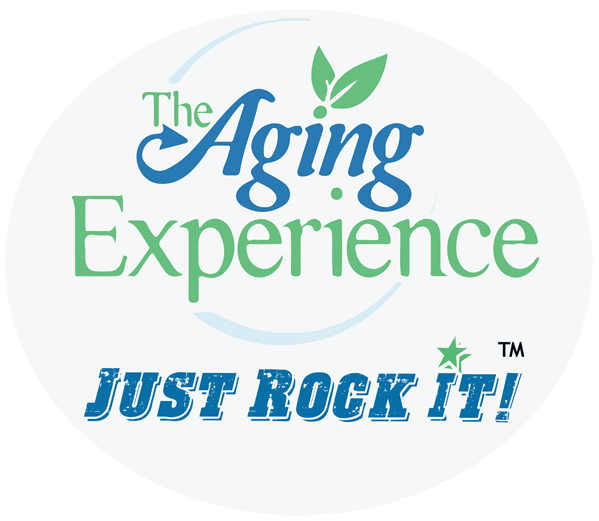Should Sedentary Lifestyle Be Considered a Medical Condition?
A sedentary lifestyle is a common cause of obesity, and excessive body weight and fat in turn are considered catalysts for diabetes, high blood pressure, joint damage and other serious health problems. But should lack of exercise itself be treated as a medical condition? Mayo Clinic physiologist Michael Joyner, M.D., argues that it should be.åÊ
Physical inactivity affects the health not only of many obese patients, but also people of normal weight, such as workers with desk jobs, patients immobilized for long periods after injuries or surgery, and women on extended bed rest during pregnancies, among others, Dr. Joyner says.åÊ
Prolonged lack of exercise can cause the body to become deconditioned, with wide-ranging structural and metabolic changes: the heart rate may rise excessively during physical activity, bones and muscles atrophy, physical endurance wane, and blood volume decline. When deconditioned people try to exercise, they may tire quickly and experience dizziness or other discomfort, then give up trying to exercise and find the problem gets worse rather than better.
“I would argue that physical inactivity is the root cause of many of the common problems that we have,” Dr. Joyner says. “If we were to medicalize it, we could then develop a way, just like we’ve done for addiction, cigarettes and other things, to give people treatments, and lifelong treatments, that focus on behavioral modifications and physical activity.”
Several chronic medical conditions are associated with poor capacity to exercise. Too often, medication rather than progressive exercise is prescribed, Dr. Joyner says.
If physical inactivity were treated as a medical condition itself rather than simply a cause or byproduct of other medical conditions, physicians may become more aware of the value of prescribing supported exercise, and more formal rehabilitation programs that include cognitive and behavioral therapy would develop, Dr. Joyner says.
For those who have been sedentary and are trying to get into exercise, Dr. Joyner advises doing it slowly and progressively.
“You just don’t jump right back into it and try to train for a marathon,” he says. “Start off with achievable goals and do it in small bites.”
There’s no need to join a gym or get a personal trainer: build as much activity as possible into daily life. Even walking just 10 minutes three times a day can go a long way toward working up to the 150 minutes a week of moderate physical activity the typical adult needs, Dr. Joyner says.
What do you think? Is our butt sitting a medical condition that needs to be treated?
Source: Mayo Clinic
As Recession Holds, Generations Move In Together
According to the Pew Research Center, the recession has helped fuel the largest increase in the number of Americans living in multi-generational households in modern history. From 2007 to 2009, the total spiked from 46.5 million to 51.4 million.
The poverty rate among people in multi-generational households is substantially smaller than for those in other householdsÛÓ11.5% vs. 14.6% in 2009, according to the new Pew Research Center analysis of Census Bureau data.
Slightly more than a third of multi-generational households (4.2 million) encompassed three or more generations, for example, a householder, adult child and grandchild. The remaining multi-generational households, about 857,000, consist of two skipped generationsÛÓa grandparent and a grandchild.
According to Pew, the ability to pool financial resources is an advantage of multi-generational living, but it comes with a trade-off. Multi-generational households are relatively largeÛÓan average of 4.3 residents, compared with 2.4 in other households.
Key findings of the report include:
- The number of Americans living in multi-generational households increased 4.9 million from 2007 to 2009. By contrast, the number of people in other households rose by only 333,000.
- The number of young adults (ages 25 to 34) in multi-generational households increased to 8.7 million in 2009 from 7.4 million in 2007. Both the numerical growth (1.3 million people) and the percentage increase it represents (16.8%) were larger than for any other age group.
- The most likely groups to live in multi-generational households are Asians (25.8% in 2009), blacks (23.7%) and Hispanics (23.4%). The share among whites was much lower (13.1%).
- In 2009, 16.2% of foreign-born heads of household and 9.6% of native-born heads of household lived in multi-generational households.
- After adjusting to a household size of three, the median income for multi-generational households was $57,533 in 2009, or 2% less than the $59,002 median income for other households.
What do you think? Are you seeing this trend? Are you part of it?
Life-Long Learning Key to Quality of Life
According to the Sloan Center on Aging & Work at Boston College older adults have a higher level of educational attainment than previous generations, and many are still actively involved in advancing their education. ÛÏIn 1965, 24 percent of the older population had graduated from high school, and only 5 percent had at least a bachelorÛªs degree. By 2008, 77 percent were high school graduates or more, and 21 percent had a bachelorÛªs degree or more,Û according to the Older Americans 2010 report.
Adults ages 55 to 74 with a four-year college degree has increased from 9 to 27 percent. The share of adults ages 55 to 74 who have a college degree is projected to rise to 31 one-half (50 percent) of women aged 55-64 had at least some college education compared with only slightly more than a fifth (22 percent) in 1984.
Recent reports show that a small proportion of older (1.4% of those aged 40+) are enrolled as full-time students in public or private institutions of higher education. Projections suggest that ÛÏeducational upgradingÛ by older adults (ages 40-64) is occurring, with approximately 1 million projected to earn bachelorÛªs degrees and 1.2 million masterÛªs degrees between 2008-2018. Among college-going adults aged 50+, half of them attend community colleges.
Older adults with higher educational attainment are less likely to be unemployed and less likely to be employed in physically-demanding jobs or jobs with difficult working conditions. They also are more likely to have access to flexible work arrangements, such as working from home or the ability to control their work schedules.
In 2009, ÛÏ10.8 percent of workers age 65 or older who had not completed high school were unemployed, compared with 5.8 percent of their counterparts who completed four or more years of college, according to a 2009 analysis of data from the Current Population Survey. Some of this should come as no surprise.åÊ
What I have found in the thousands of hours I spend around seniors is that those with the highest quality of life exhibit certain attributes. One is the desire for life-long learning. Makes sense too doesnÛªt it. If you continue to learn and challenge your mind, chances are you might hold off dementia and the dreaded AlzheimerÛªs Disease. As Jim Rohn says ÛÏFormal education will get you a job. Self education will get you rich.Û
Aerobic Exercise Can Reduce Depression in Heart Failure Patients
Depression is common in patients with cardiac disease, especially in patients with heart failure. Up to 75% of individuals suffering from congestive heart failure develop depression. A new study suggests that aerobic exercise may reduce depressive symptoms.
A trial involved 2322 patients treated for heart failure at 82 medical clinical centers in the United States, Canada, and France.åÊ
Supervised aerobic exercise and home exercise was assigned to a segment of participants. Participants primarily used treadmills and stationary bikes, according to the study.
789 patients (68%) died or were hospitalized in the usual care group compared with 759 (66%) in the aerobic exercise group. Compared with guideline-based care, exercise training resulted in a modest reduction in depressive symptoms, although the clinical significance of this improvement is unknown.
ÛÏIt’s something that most patients can engage in. It results in improved cardio-respiratory fitness, they have more stamina, and now we see that not only do they derive these physical benefits, but they also derive psychological benefits as well.Û Duke lead investigator, James A. Blumenthal, Ph.D., told the New York Times.
It seems like an obvious study. It has been proven time and again that aerobic exercise releases chemicals in our body that boost our mood and attitude. It seems to always boil down to basics doesn’t it. Get exercise. And you also in the process likely decrease your chance for cardiac problems to begin with!
Cataract Surgery Reduces Incidence of Hip Fracture
Maybe this is one of those “really you needed a study for this?” posts. University of California, Los Angeles researchers found that Medicare beneficiaries who had cataract surgery had lower odds of hip fracture within 1 year after surgery compared with patients who had not undergone cataract surgery.
Think about this now. If you can see better, it makes sense that you may not slip and fall as much.åÊ
In the study,
- 16% of people who had surgery had fewer hip fractures within the first year than those who did not.
- åÊParticipants between the ages of 80 and 84 experienced the biggest benefit of the surgery, with a 28% reduced risk of fractures.
ÛÏThis is elective surgery, and sometimes people think, Û÷I’m too sick to have my cataracts out,’ or Û÷I’m too old,’åÊÛ the study’s lead author, Anne L. Coleman, M.D., told the New York Times. ÛÏBut the take-home message from this study is that if you’re starting to have vision problems and the doctor says you have cataracts, you should probably think of having them removed.Û
Well yeah don’t you think?









